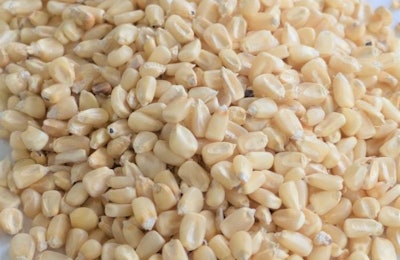
I have heard about food self-sufficiency in my native Mexico ever since I was a youngster. A dream to long for, all these years have passed by—and Mexico, and possibly most of Latin America—still has that dream, but now with three times more population.
I bring this issue because in the last few days many in Mexico, including feed manufacturers, are worried about the decree to restrict transgenic corn imports to the country. Mexico is now the No. 1 yellow corn importer from the U.S. All this grain - by the way, transgenic corn - goes to feed manufacturing of a thriving animal protein industry, as well as to the starch industry.
This is a complicated story for a country considered the cradle of corn. And the cradle of the Green Revolution! However, readers must be aware that corn for human consumption is white corn. Mexico is self-sufficient in white corn. Even an exporter! But yellow corn is a different story.
The current Mexican government is pushing, once again, for self-sufficiency. In a recent interview with the Mexican Feed Council (Conafab), Dr. Víctor Villalobos, secretary of agriculture and rural development, said import dependence is decreasing in Mexico in beans and rice, and actually 1 million metric tons more of yellow corn were produced in 2020. They expect a 50% decrease in imports by the end of this term (three more years) with the production of an extra 7-8 million metric tons of yellow corn.
Dr. Villalobos explicitly said that the decree prohibiting transgenic corn imports is only for white corn for human consumption, not for yellow corn used in feeds and industrial purposes. Transgenic yellow corn can be imported, but not planted or consumed.
All hope this will stay true. But concerns linger in the atmosphere. If yellow corn imports are restricted or banned, the feed industry, and consequently the whole animal protein industry, will be in jeopardy.
It is a good thing that imported commodities dependence in Mexico is decreasing. There are very good intentions behind this, but Mexico is not going to be a grain-producing power, as Dr. Villalobos himself said. And at the end, it all depends on cost and efficiency. How much would that cost the country?
The strategy of importing grains for industrial use is to transform grains into cheap animal protein and compared to the U.S., Argentina or Brazil, Mexico has lower yields, not that much land for cultivation and scarce water resources. So maybe we just need to accept the fact that imports will continue and focus on being very efficient in producing chicken and eggs, as well as on eradicating or keeping away animal diseases. Or maybe yes, using transgenic corn?
What do you think?
I have heard about food self-sufficiency in my native Mexico ever since I was a youngster. A dream to long for, all these years have passed by—and Mexico, and possibly most of Latin America—still has that dream, but now with three times more population.
I bring this issue because in the last few days many in Mexico, including feed manufacturers, are worried about the decree to restrict transgenic corn imports to the country. Mexico is now the No. 1 yellow corn importer from the U.S. All this grain - by the way, transgenic corn - goes to feed manufacturing of a thriving animal protein industry, as well as to the starch industry.
This is a complicated story for a country considered the cradle of corn. And the cradle of the Green Revolution! However, readers must be aware that corn for human consumption is white corn. Mexico is self-sufficient in white corn. Even an exporter! But yellow corn is a different story.
The current Mexican government is pushing, once again, for self-sufficiency. In a recent interview with the Mexican Feed Council (Conafab), Dr. Víctor Villalobos, secretary of agriculture and rural development, said import dependence is decreasing in Mexico in beans and rice, and actually 1 million metric tons of more yellow corn were produced in 2020. They expect a 50% decrease in imports by the end of this term (three more years) with the production of an extra 7-8 million metric tons of yellow corn.
Dr. Villalobos explicitly said that the decree prohibiting transgenic corn imports is only for white corn for human consumption, not for yellow corn used in feeds and industrial purposes. Transgenic yellow corn can be imported, but not planted or consumed.
All hope this will stay true. But concerns linger in the atmosphere. If yellow corn imports are restricted or banned, the feed industry, and consequently the whole animal protein industry, will be in jeopardy.
It is a good thing that imported commodities dependence in Mexico is decreasing. There are very good intentions behind this, but Mexico is not going to be a grain-producing power, as Dr. Villalobos himself said. And at the end, it all depends on cost and efficiency. How much would that cost to the country?
The strategy of importing grains for industrial use is to transform grains into cheap animal protein and compared to the U.S., Argentina or Brazil, Mexico has lower yields, not that much land for cultivation and scarce water resources. So maybe we just need to accept the fact that imports will continue and focus on being very efficient in producing chicken and eggs, as well as on eradicating or keeping away animal diseases. Or maybe yes, using corn genetic improvements. Transgenic corn?
What do you think?


















